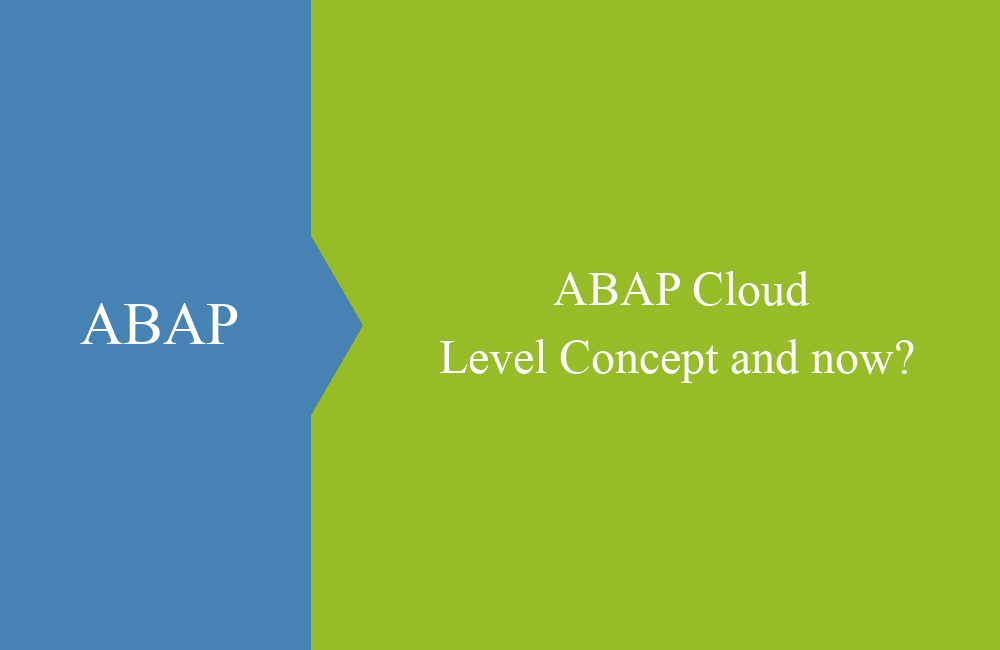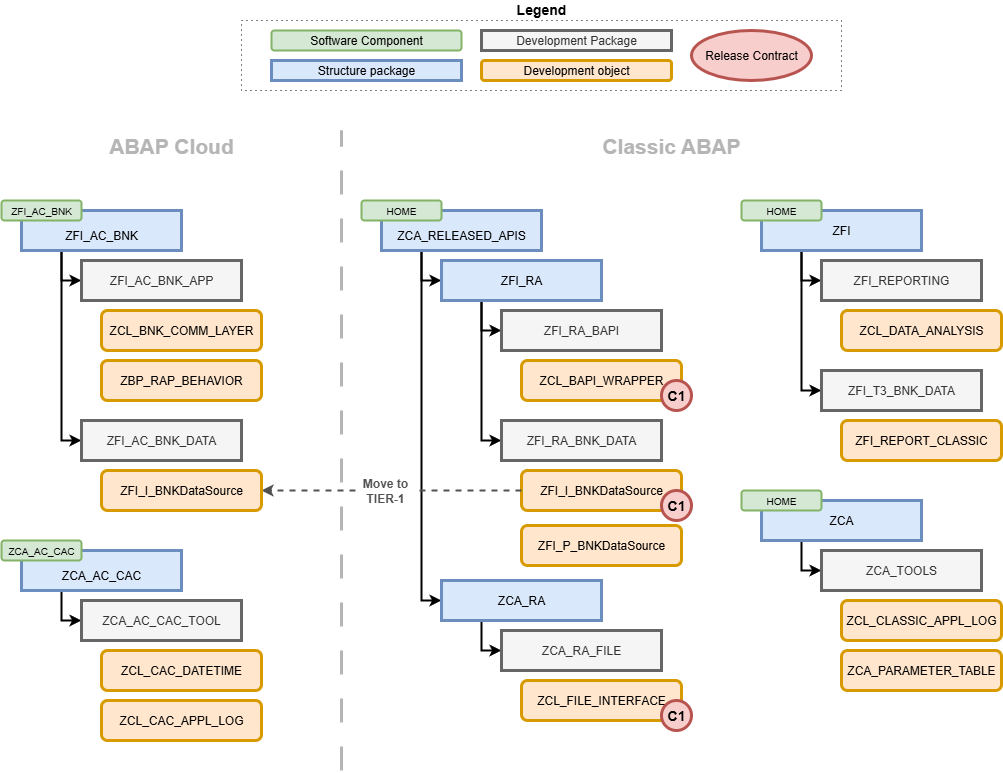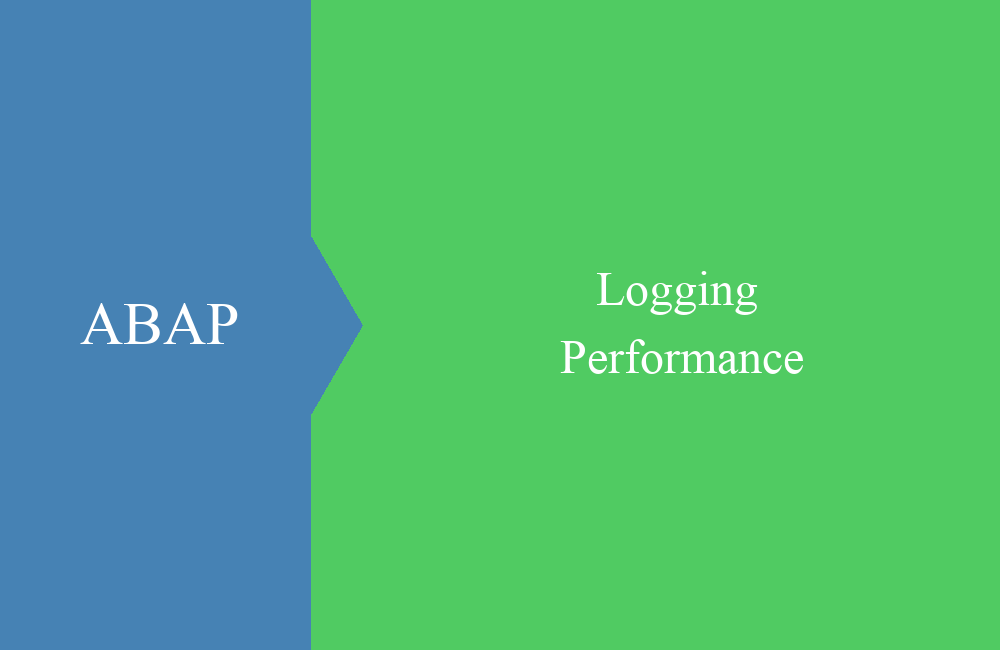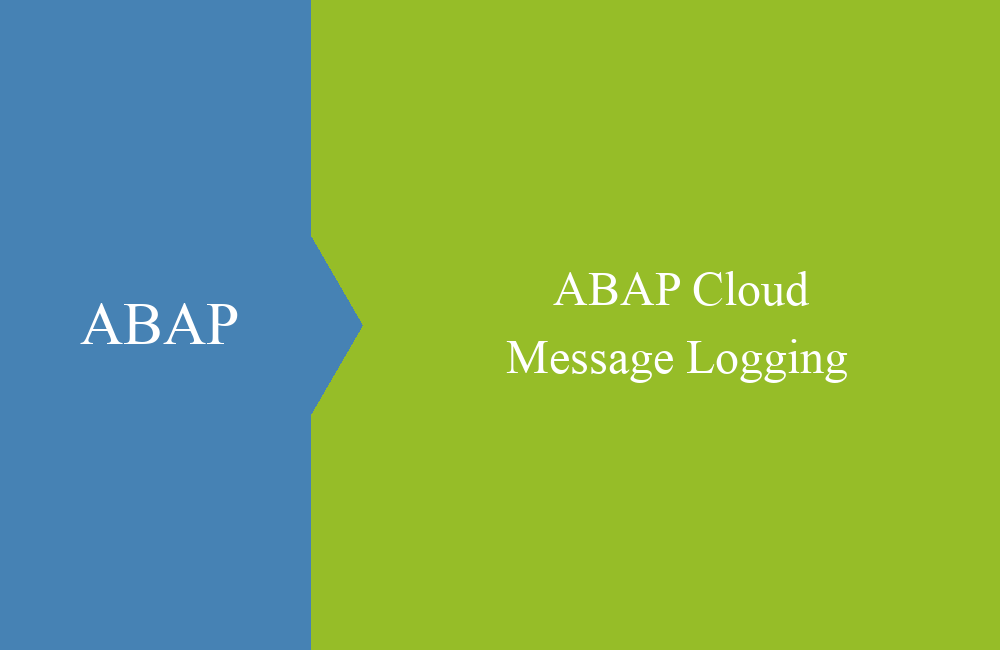
ABAP Cloud - Level Concept and now?
The question has often been asked: What to do with the new Level Concept and what does the new definition of Clean Core actually mean? Let's take a closer look.
Table of contents
In this article, we'll explore the Clean Core Concept and look at how it's progressing from several perspectives.
Introduction
The new Clean Core Level Concept has been released for almost two months now, and we've often been asked what's next for it. On the one hand, there are companies that have already begun a transformation toward ABAP Cloud and have created their various layers in the system based on the 3-TIER model. On the other hand, there is the group of companies that now want to adopt the Clean Core concept and are wondering where to start.
Strategies
In this chapter, we'll look at the strategies and approaches you can use to approach the new Clean Core Level Concept.
3-TIER Migration
Let's start with the easiest step. If you're already running the 3-TIER model, you don't really need to change much, except perhaps the name of your package structures and how you want to handle them. In principle, Tier 1, or now Level A, will continue to be used. Creating software components for ABAP Cloud development remains best practice, as this automatically ensures that developers develop Clean Core and Cloud-Ready. This means you don't have to worry about whether the API you're using is truly clean core if you rely on the released APIs.
TIER 3, or Classic ABAP (Level B-D), no longer needs to be grouped under one package; however, you can retain the parent package if you've already bundled the objects. This allows you to continue using your normal package structures outside of the Software Components.
New Beginning
If you're new to the topic, there are a few things you should pay particular attention to in the near future. First, you should prepare your system (>= S/4HANA 2022) for ABAP Cloud. This includes setting up the new ABAP Cloud APIs, such as email, software components, bgPF, Business Configuration, and several more. You can find further information in our setup checklist, which has been adapted to the Level Concept.
Similarities
What do both approaches have in common? We will now look at the different points in different sections. First, an overview of the new structure, which we will then use as a reference in the following sections.
New Developments
You should therefore start new developments in ABAP Cloud and thus with a software component (SWC). If it's a new extension to the standard, you should check whether ABAP Cloud is supported or whether it's a classic extension. More on this in the section below.
We still recommend creating SWCs for each extension. This allows you to cover various aspects that contribute to better software quality in the system:
- Monster packages - This prevents packages from becoming too large in the system, making it impossible to keep track of them. It also prevents different projects and resources from getting mixed up.
- Structuring - You automatically ensure a simple and clear structure within the packages. Where are the apps located, where are there interfaces, which objects are released? This should allow even new developers to find their way around an extension.
- APIs - The objects are initially cleanly separated from other SWCs. If you want to use something elsewhere, you must first set up a C1 contract for it. This will help you consider how the objects should be designed, as well as which objects might be used by other components.
API Enablement
As shown in the overview above, we use our own packages (ZCA_RELEASED_APIS) and structures for the APIs in the system. This is intended to give all developers a quick overview of the released wrappers. On the one hand, there may be other objects belonging to the wrapper that are not yet released; on the other hand, we want to avoid developing something twice and thus incurring higher maintenance costs. A separate software component for this package is not absolutely necessary; the classic HOME component can also be used.
Basically, nothing has changed in the creation of wrappers, and we follow best practices regarding which objects are suitable for wrappers. With the new Level B (Classic APIs) artifacts, we get another hint as to which objects we can use very well for wrappers.
Classic Extensibility
This is where the new part of the extensions comes in. Until now, we were required to implement as much as possible in ABAP Cloud, even when we implemented classic extensions. If you are now developing a classic BADI or a classic user exit that you absolutely need for your process, you should implement it in Classic ABAP. This saves you the need for wrappers and other components that you would have to outsource to the various layers. Of course, you should ensure that you are using the most up-to-date APIs. So, don't use SELECT on the classic tables, but rather use the released Core Data Services or create your own wrappers.
The new ABAP Test Cockpit (ATC) checks should also help here, telling you whether there is a successor for an API and whether it is the right API for this case. Hence the recommendation to use ATC for governance to support you as a developer.
Technologies
Also important for further evaluations is the note 3578329, which provides important information about technologies and how they are classified within the Level Concept. Let's look at a few examples from the list:
- Classic Batch Job (SM37) - Classified as Level B, therefore Clean Core, but not Cloud Ready. There is now a good alternative here with the Application Job.
- Business Object Processing Framework (BOPF) - Level B and therefore Clean Core. However, you should create new applications with RAP. There are now migration paths and tools for CDS-based BOPF to bring it more towards RAP.
- SAP Query - Classified as Level C, since access is primarily modeled on standard tables and not on Core Data Services.
- Workflow - Both Classic and Flexible Workflow are classified as Level B and can therefore be used for Clean Core. However, only SAP Build Process Automation is classified as Cloud Ready.
- ABAP Report - The classic report is classified as Clean Core (Level B), but you should implement new applications with SAP Fiori. Basically, you no longer have to replace all reports at once. This is still questionable, especially with complex transactions and frameworks.
Journey
This begins the journey to Clean Core. In the Browfield case, you should generally work on Level D first and reduce it to the bare essentials. You can then document the absolutely necessary use cases and mark them as completed. There will most likely still be some Level D findings where there is simply no alternative. Once you're done with that, you should then look at the findings in Level C. These are currently Conditional Clean Core and may change in the future, so it certainly makes sense to look for alternatives.
Finally, you should consider modernizing the frontend. Transforming reports into Fiori and Fiori Elements applications can simplify processes. Breaking down complex GUI applications and creating Fiori applications with a faster and simpler workflow can also increase the productivity of colleagues. In principle, this also ensures uniformity in the user interface, since Fiori applications are the goal.
Hint: The graphic is only intended to symbolize the journey toward Clean Core. By completing Level D, you are already well on your way to Clean Core.
Business Technology Platform
The BTP is an important factor when it comes to innovations and cloud solutions and should therefore definitely be considered by companies in their architecture. However, we still often see consulting company slides and notes stating that Clean Core can only be achieved with the help of BTP. This statement is currently incorrect, as Clean Core can already be achieved with the Clean Core Level Concept and a correct implementation.
Not implementing an extension on the system is sometimes not possible, as there are certain scenarios that are simply tightly coupled and should be implemented On-Stack. Even in a Public Cloud solution, scenarios must be implemented on the system, as they are not possible Side-by-Side. Side-by-Side development should be used where it makes sense and creates a value and not be sold as a Clean Core solution.
Conclusion
Hopefully, this should now make the path from the 3-TIER model to the Level Concept a little clearer and easier for beginners as well as ABAP Cloud veterans. Fundamentally, however, it should now also be clear what can be worked on in the near future and that the mountain of work remains manageable and achievable.







